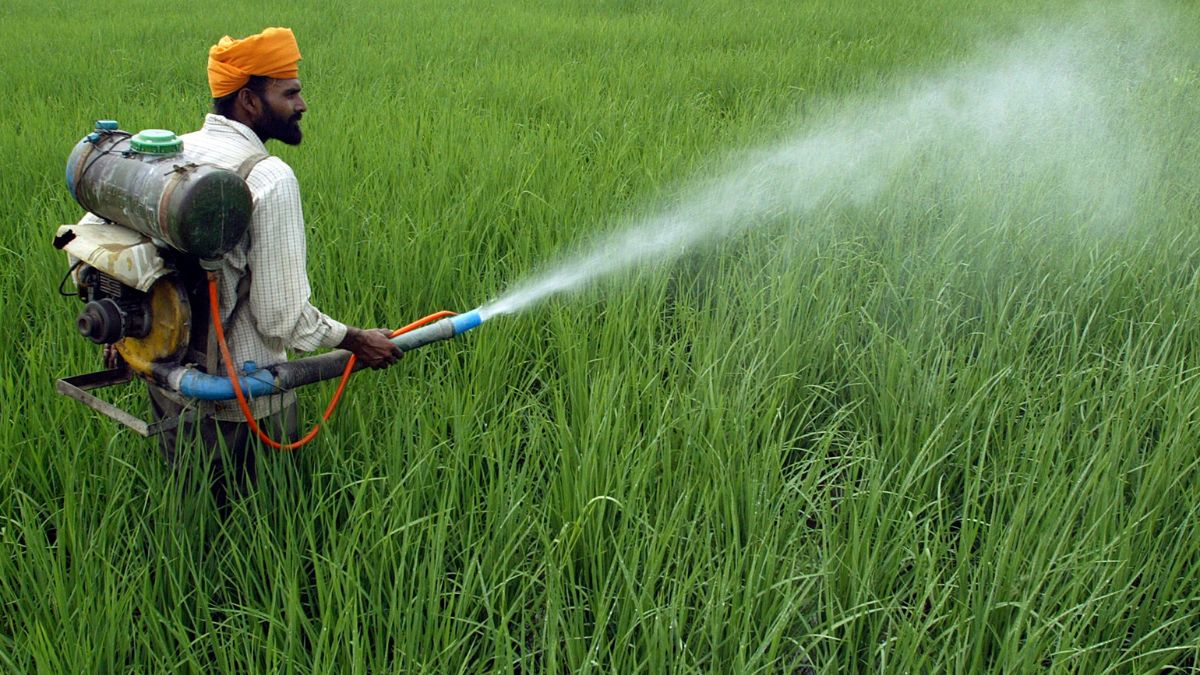India is staring at a shortage of rainfall in June. According to the Indian Meteorological Department (IMD) data, the precipitation deficit increased to 18.6 per cent until June 25, compared to 17.8 per cent a day before, due to the slow progress of the southwest monsoon.
A shortfall in rain has far-reaching consequences. As the “below normal” rainfall in June stings India, fears have emerged of the country witnessing food inflation.
Let’s take a closer look.
What has the IMD said?
As of June 25, India’s rainfall deficit is nearly 19 per cent below the long-period average (LPA), the IMD has said.
A normal monsoon is computed using a long-period average of 30 years for a particular area. A shortage is calculated in percentage if the precipitation is below the LPA, according to a Moneycontrol report.
Out of the 36 states and Union Territories, 11 continue to report rainfall deficit of more than 50 per cent, with Chandigarh and Punjab being the worst affected.
In 12 states, including Uttar Pradesh, Bihar, Punjab, Jharkhand and Gujarat, the rainfall was below 50 per cent of normal until June 25.
Reservoir levels are also a cause of alarm. As of June 20, they are 9 per cent below the LTA.
Tamil Nadu, Bihar and Andhra Pradesh have reported over 50 per cent shortage in reservoir levels.
In May, the weather department had predicted “normal” rainfall in June. While the southwest monsoon arrived two days early in Kerala and six days before in northeast India on May 30, its advancement has been sluggish so far.
Impact Shorts
More ShortsIndia received an overall three per cent surplus until June 10. But the monsoon’s slow progress as searing temperatures baked most parts of the country worsened the situation.
The southern peninsula has recorded an excess of nine per cent of rains, while there has been a deficiency of 16 per cent over eastern and northeast India and 23 per cent over central India.
The northwest India has logged a rainfall shortage of 57 per cent from June 1-25, reported News18.
The Met department now forecasts “below normal” rainfall for India in June.
The impact of rainfall crunch
Almost 50 per cent of farmers’ irrigation needs for agriculture rely solely on the monsoon.
A poor monsoon could hit agricultural output, triggering higher food prices and inflation.
The rain shortfall in June has already forced farmers to halt their sowing preparations for kharif crops such as rice, sugarcane, cotton, and soybeans. As per a Down To Earth (DTE) magazine report, the sowing of kharif crops kickstarts in Madhya Pradesh, Odisha, West Bengal, Maharashtra, Andhra Pradesh and Telangana around this time. However, a lack of rainfall has prevented the farmers to go ahead.
Paddy planting has been affected in Punjab due to hot and dry weather. A Punjab agriculture department official told DTE, “We do not have official data yet, but preliminary reports indicate that farmers are adopting a wait-and-see approach. Labour shortage also compounded the issue as agricultural workers had gone home for the elections.”
The magazine’s report noted that a recurring dry June has led farmers to change their sowing patterns.
Speaking to Forbes India, Madhavi Arora, lead economist, Emkay Global Financial Services, warned, “A significant delay in kharif sowing will impact food output, and the rabi sowing season as farmers will have less time to prepare their fields after the kharif harvest.”
A ‘State of Marginal Farmers of India 2024’ report published last week found that rain-related events have hurt India’s marginal farmers more significantly than other extreme weather events in the past five years, reported Scroll. Over 50 per cent of the 6,615 respondents said that they lost half or more of their standing crops owing to rain-related weather conditions, including droughts or less than-normal-rainfall, early withdrawal or late onset of the monsoon, and a rise in unseasonal rainy days.
The prolonged and intense heatwaves have already hit food retail prices. According to Forbes India, economists pointed out that average retail prices on an annual basis increased by 45.1 per cent for vegetables, 13.5 per cent for pulses, 9.4 per cent for cereals, and three per cent for milk.
If the monsoon picks pace next month, the vegetable prices could drop from August. “However, prices of milk and pulses will stay high due to tight supplies. Cereals could also see elevated prices, with the government announcing a 5.4 per cent increase in MSP [minimum support price] for paddy for the current kharif marketing season,” Arora told Forbes India.
ALSO READ: Erratic monsoon: How climate change is making it difficult for Indian farmers
Will there be relief soon?
The IMD is hopeful that the monsoon will advance in July. Senior IMD scientist Dr DS Pai told News18, “The monsoon is looking much more organised now. The rainfall activity has improved significantly, so it should progress well now.”
La Niña weather conditions are expected to develop during July-September. The phenomenon is known to bring abundant rainfall to India and colder and longer winters.
Progress in the monsoon pace will be good for the farmers as July and August are the main months for the sowing and vegetative growth of the kharif crops.
With inputs from agencies


)

)
)
)
)
)
)
)
)



